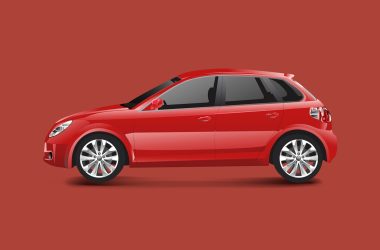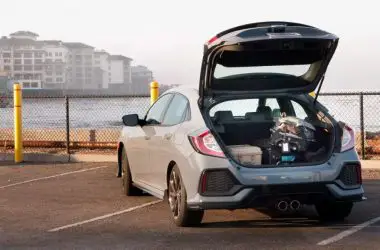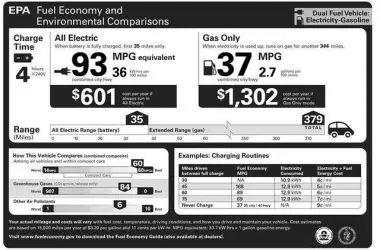Cargo space is an important consideration for many car buyers. The amount of cargo space needed depends on the buyer’s lifestyle and needs. When comparing different vehicle types, cargo capacity can vary significantly. Hatchbacks tend to offer more cargo space than sedans, but less than most SUVs and wagons. This article analyzes the differences in cargo space between hatchbacks, sedans, SUVs and wagons. It aims to help readers understand the cargo carrying abilities of each vehicle type, so they can select the option that best suits their cargo hauling requirements.
Definition of Hatchbacks
Hatchbacks are a car body style with a rear door that opens vertically to provide access to the cargo space. The key distinguishing feature is that the rear cargo space and passenger cabin are part of a continuous volume, unlike in a sedan where the trunk is separated from the main body. The hatchback design combines some advantages of sedans, station wagons, and SUVs.
According to the Merriam-Webster dictionary, a hatchback is “an automobile with a door at the rear end of the passenger compartment that opens upward to permit easy access to the luggage space” [1]. Collins Dictionary defines it as “a car with a door across the full width at the back end that lifts up to provide easy access to the boot” [2].
Cargo Capacity in Hatchbacks
Hatchbacks are known for their cargo practicality and space. The average hatchback has around 25 cubic feet of cargo capacity behind the rear seats (source). However, cargo room can vary greatly depending on the specific model. Smaller hatchbacks may have as little as 15 cubic feet, while larger models can have up to 30 cubic feet or more of space behind the rear seats.
Where hatchbacks really excel is when the rear seats are folded down. This greatly expands the cargo area, often doubling the available space. Most hatchbacks will have between 50-70 cubic feet of maximum cargo room with the rear seats folded (source). The boxy shape and fold-flat rear seats make hauling large, bulky items simple. So hatchbacks provide excellent utility whether you need room for a few grocery bags or an entire IKEA haul.
Cargo Capacity in Sedans
Sedans typically offer moderate cargo space, though less variability than hatchbacks. The average sedan has around 15 cubic feet of trunk space. However, cargo volume can range from compact sedans like the Honda Civic with only 12.3 cu ft to full-size models like the Mercedes-Benz S-Class at 16.3 cu ft (https://cars.usnews.com/cars-trucks/mercedes-benz/s-class/2019/interior).
Unlike hatchbacks and wagons, most sedans do not offer folding rear seats to expand cargo capacity. The trunk space is relatively fixed, which can make fitting bulky items more difficult. There are a few sedan models like the Chrysler 300 that do have split-folding rear seats, but this feature is less common.
The more limited cargo flexibility in sedans means you have to carefully measure larger items to ensure they’ll fit in the trunk. Sedans work best for transporting smaller, regularly-shaped objects that conform well to the fixed trunk space.
Cargo Capacity in SUVs
SUVs tend to have a decent amount of cargo space, with the average midsize SUV offering around 30 cubic feet behind the back seat according to https://www.xcelerateauto.com/blog/comparing-electric-suv-cargo-space. However, a good portion of that space is often high up and not very usable. The cargo areas are also quite shallow in many SUVs. Folding down the 2nd and 3rd row seats can open up a lot more space, with some larger SUVs offering over 80 cubic feet. But that’s at the sacrifice of passenger seating.
Cargo Capacity in Wagons
The average wagon has around 30-35 cu ft. of cargo space with the rear seats up (example: Volvo 140 Series 1968). With the rear seats folded down, cargo capacity increases to 60-70 cu ft. or more. Having fold-flat rear seats is a standard feature in most modern wagons, allowing owners to maximize cargo space as needed.
Wagons provide SUV-like cargo space while maintaining the lower center of gravity and better fuel efficiency of a car. The long, square-shaped cargo area makes loading large, bulky items like furniture or camping gear easy. The low lift over height is helpful for loading heavy items without straining your back. Wagons offer an excellent balance of utility and driving dynamics.
Ease of Loading
Hatchbacks have a distinct advantage when it comes to ease of loading cargo over sedans and SUVs. Hatchbacks have a rear liftgate that provides a large, unobstructed opening to load cargo. Sedans have a trunk with a smaller opening that can make fitting large, awkwardly shaped items difficult. SUVs tend to have more cargo space than sedans and hatchbacks but the higher ride height can make loading heavy items more challenging. The lower load floor of hatchbacks allows you to simply slide objects in without lifting them over a high trunk lip. Hatchbacks also tend to have 60/40 split folding rear seats that allow part of the rear seat to fold down while still carrying passengers in the back. This versatility is useful when you need to transport a mix of people and cargo.
Driving Dynamics
The driving dynamics of hatchbacks and sedans can vary based on factors like cargo weight and distribution.
When loaded with cargo, hatchbacks tend to handle better than sedans due to their lower center of gravity. The cargo area being behind the rear axle helps balance out the weight. Sedans with a trunk tend to feel heavier in the rear.[1] This can cause the back wheels to lose grip easier in tight turns with a loaded trunk.
In terms of fuel economy, sedans tend to be slightly more efficient. Their aerodynamic shape causes less drag than the squared-off rear of a hatchback.[2] However, with the rear seats folded down, a hatchback provides a larger cargo area which can offset the aerodynamic differences.
Security Considerations
Hatchbacks can offer less security for cargo compared to sedans or SUVs with closed trunks. With a hatchback, the cargo area is connected to the passenger cabin and often has more visibility from the outside. Sedans and SUVs with trunks keep the cargo compartment separate from the cabin and less visible.
For example, the 2019 Honda Civic Hatchback has a retractable cargo cover to obscure contents, but the cargo area is still connected to the back seats. Whereas a sedan trunk would be fully closed off. Similarly, SUVs like the Honda CR-V have a covered cargo area that isn’t visible from the outside through the rear window.
Hatchback owners can add additional cargo security accessories if desired, like mats or retractable cargo covers. But sedans and SUVs start with an inherently more concealed and isolated cargo area in their trunks. So for maximum cargo security, vehicles with trunks have an advantage over most hatchback designs.
Conclusion
In examining cargo space in hatchbacks versus sedans, SUVs, and wagons, we find that each vehicle type has advantages and disadvantages. However, looking at overall cargo capacity, access, driving dynamics, and security, hatchbacks tend to offer the best combination.
Hatchbacks provide ample cargo space for most everyday needs, often exceeding the capacity of comparably sized sedans. Their boxy shape, roofline, fold-down rear seats, and rear liftgate access provide excellent practicality for hauling cargo. While SUVs and wagons offer cargo versatility too, hatchbacks are often lighter weight, more fuel-efficient, and have better handling.
For those needing to frequently load groceries, luggage, outdoor gear, or other cargo, while still retaining good driving dynamics, the hatchback is likely the best choice. Their blend of utility and performance make them a popular choice for active singles and young families alike.
In summary, when considering factors like cargo capacity, access, driving experience, and flexibility, the hatchback design offers advantages for the everyday driver looking to balance utility and fun.





